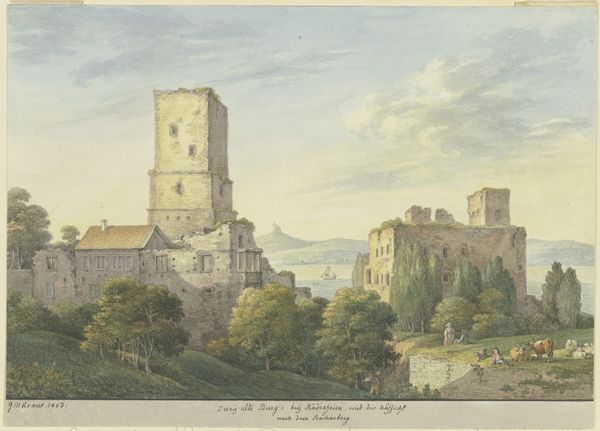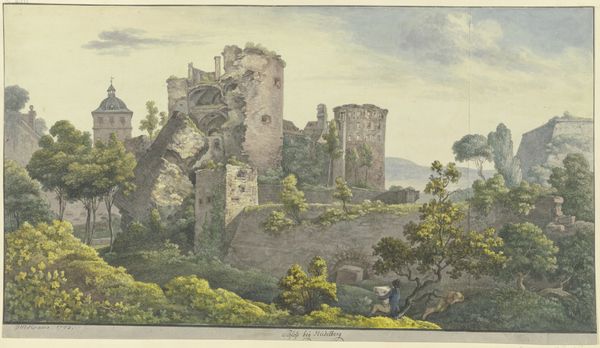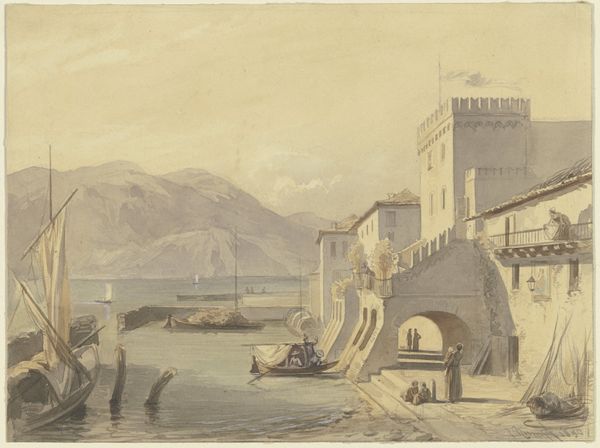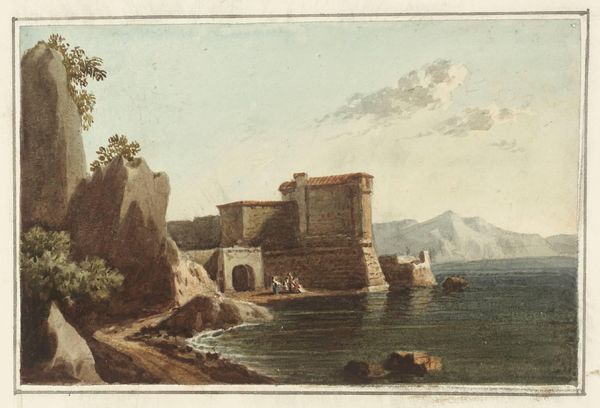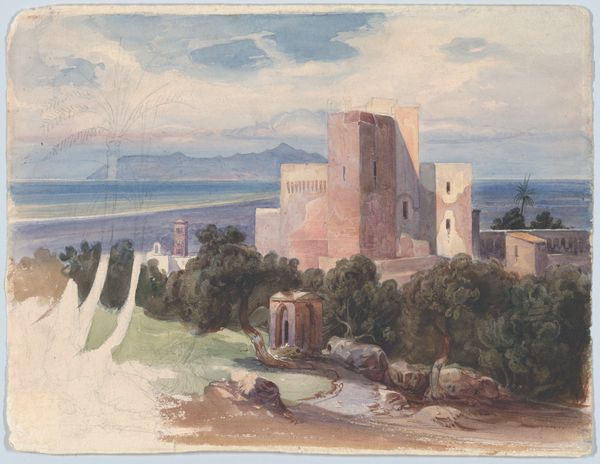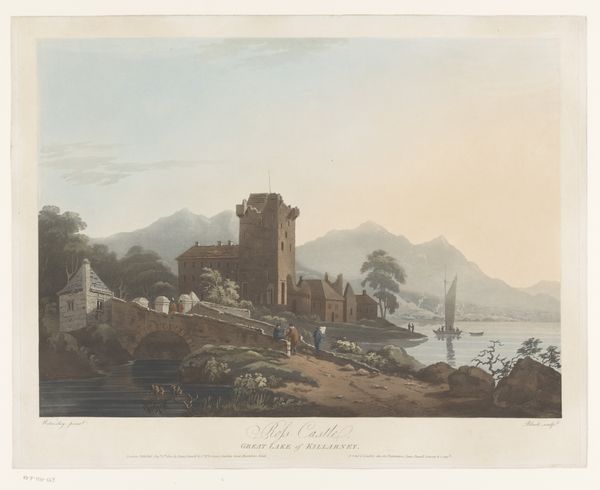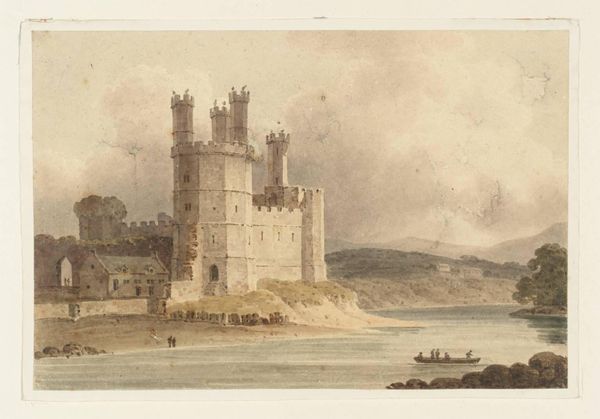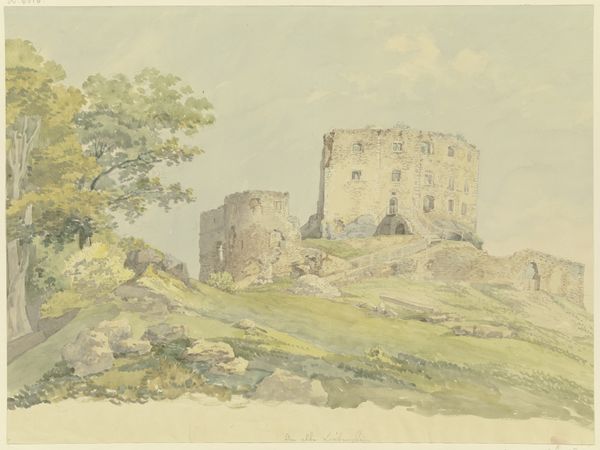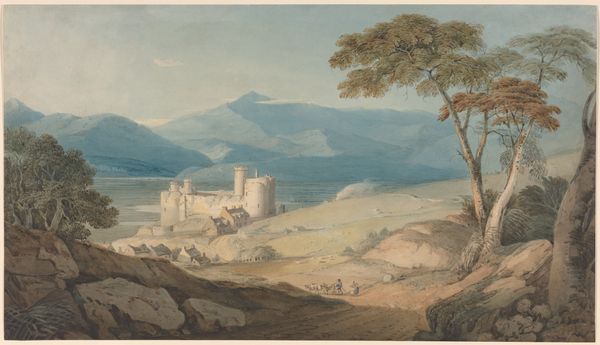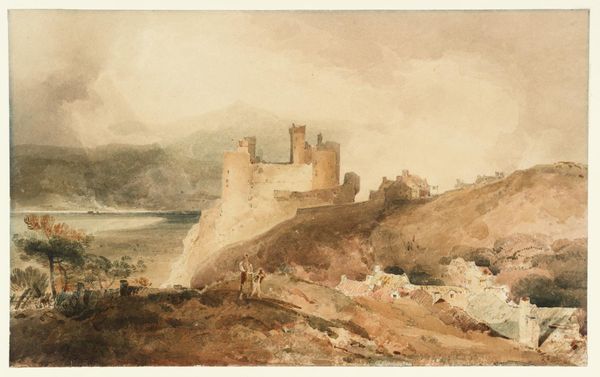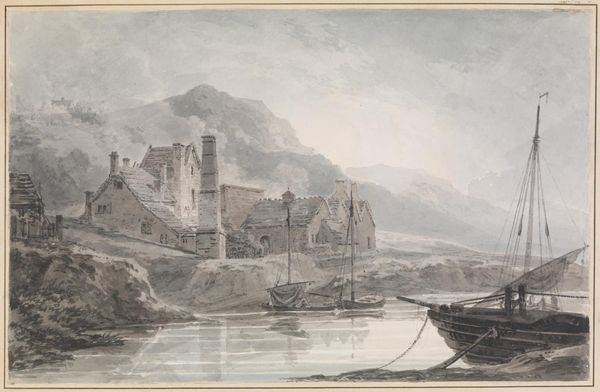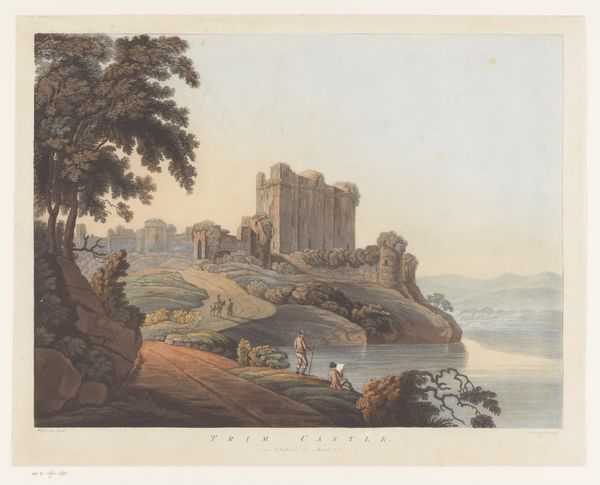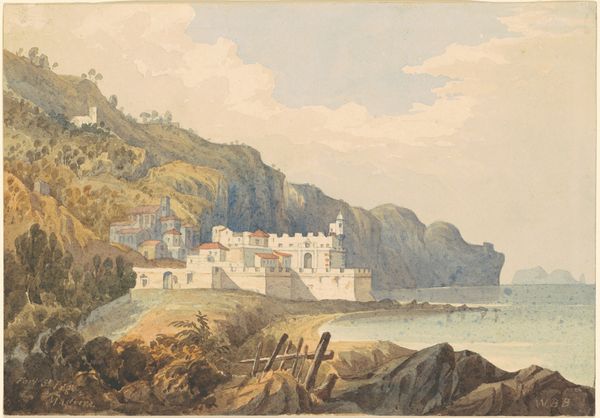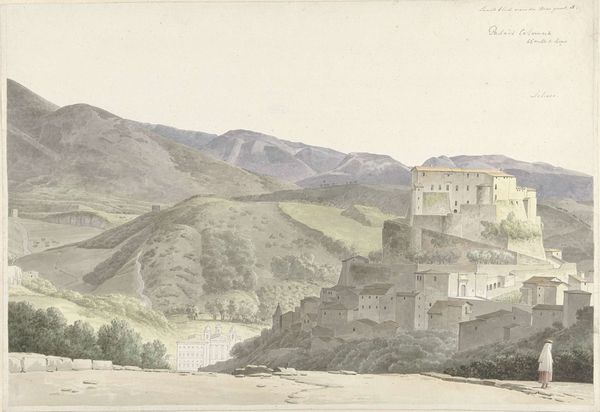
drawing, painting, watercolor, ink, architecture
#
drawing
#
painting
#
landscape
#
watercolor
#
ink
#
german
#
coloured pencil
#
romanticism
#
watercolour illustration
#
watercolor
#
architecture
Copyright: Public Domain
Editor: Here we have Georg Melchior Kraus’s “Die Niederburg (Brömserburg) bei Rüdesheim am Rhein,” created around 1803. It looks like watercolor and ink on paper, currently housed at the Städel Museum. It’s quite delicate. The composition has a striking stillness to it. What do you make of its formal qualities? Curator: The painting presents a fascinating study in the juxtaposition of ruin and idyllic landscape. Note how Kraus uses the delicate washes of watercolor to differentiate the textures; the crumbling stonework of the Niederburg stands in contrast to the smooth, reflective surface of the Rhine. Editor: It almost feels like the building is sinking back into the landscape; a sort of slow collapse. Is this visual relationship deliberate? Curator: Precisely. Consider the artist’s control over value and hue. The soft, muted colors – the greys and blues – dominate the architecture, effectively minimizing contrast and maximizing atmospheric perspective to enhance spatial depth. Editor: So the castle is visually deemphasized? What does this accomplish, from a formal perspective? Curator: The diminished presence emphasizes a feeling of transience and impermanence. The architecture, once a marker of human power, now blends almost seamlessly into the riverbanks, yielding to the enduring forces of nature. Look how Kraus frames the central structure with those verdant trees, creating depth and pushing back space in pictorial plane. How effective is the geometric scaffolding, though crumbling, in creating structure through visual design? Editor: Very effective. I initially saw only decay, but it’s all balanced—or maybe struggling toward balance. I appreciate how the piece has structure within structure. Curator: A perceptive reading. The interplay between architectural structure and landscape design invites careful consideration of Kraus’ mastery, indeed. The work showcases both aesthetic control and the ability to suggest deeper contemplation on human interventions into the natural world. Editor: That's helpful, seeing how Kraus achieves all this by emphasizing structure, visual textures, composition, and geometry, instead of subject. Curator: Agreed; careful arrangement does much to underscore how the piece offers an aesthetic study.
Comments
No comments
Be the first to comment and join the conversation on the ultimate creative platform.
